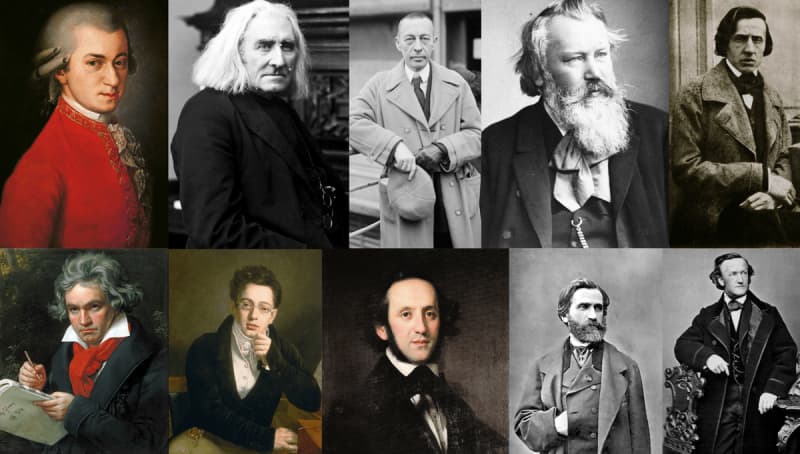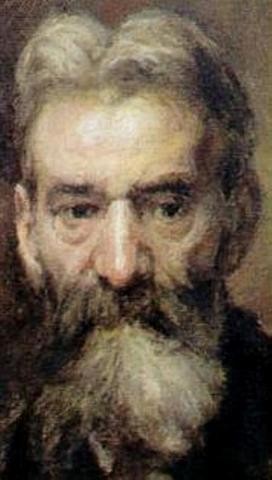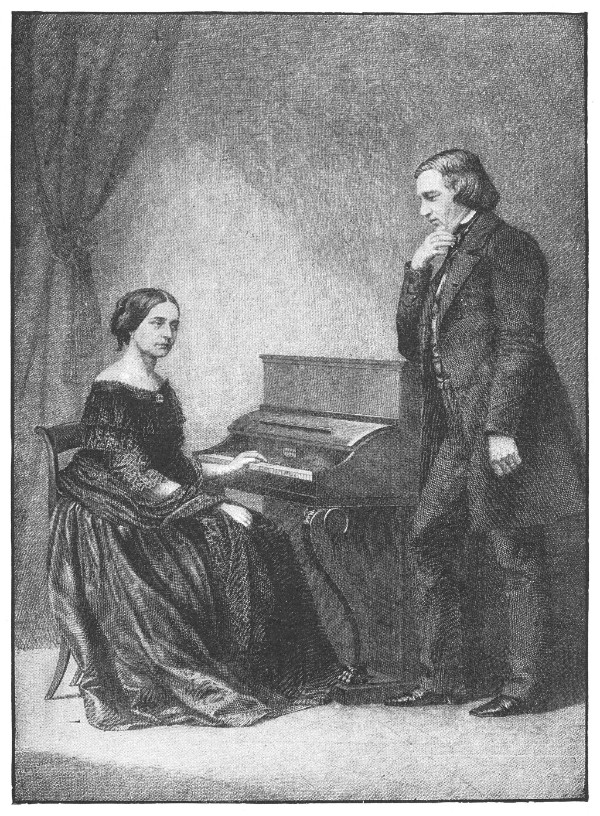The big love stories in classical music history almost always capture audiences’ imaginations, whether they’re filled with romance or tragedy (or both).
Today, we’re exploring ten of the longest marriages in classical music history, assessing how these decades-long relationships helped – or hindered – various composers’ creative processes.
We’ll be counting down in reverse order, going from the “shortest longest” marriage (40 years) to the longest marriage (a whopping 65 years!).
We’ll start with one of the unhappiest marriages in classical music history:
10. Joseph and Maria Anna Haydn
1760-1800 – 40 years
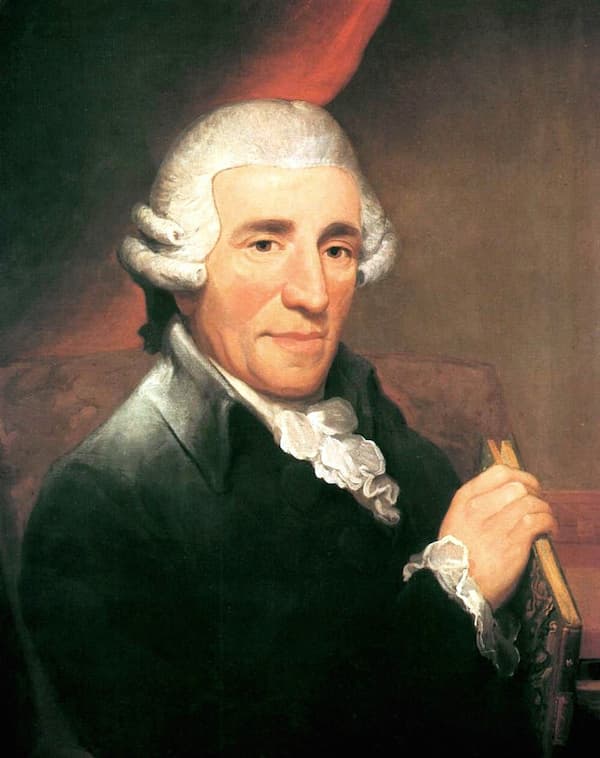
Thomas Hardy: Franz Joseph Haydn, ca. 1791 (London: Royal College of Music Museum of Instruments)
In the mid-1750s, Joseph Haydn worked as a piano teacher for the Keller family in Vienna. He fell in love with one of the daughters, a woman named Theresia. However, Theresia entered a convent in 1755, putting an end to their romance.
Two years later, Haydn secured a job working for a nobleman named Count Morzin. Once he had steady work, he decided he wanted to settle down with a wife and children, so he got married in 1760. The woman he chose was Theresia’s sister, Maria Anna.
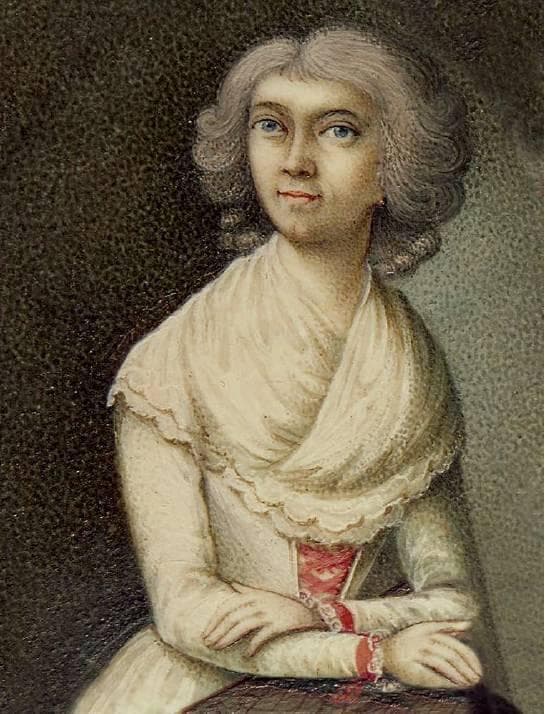
Maria Anna Haydn
The two ended up loathing each other. Maria Anna had no interest in Haydn’s career or music generally, and she was apparently unable to bear children.
In 1761, Haydn accepted a position with the noble Esterházy family, which required him to live at the Esterháza palace in rural Hungary. Maria Anna didn’t come with him. Once they were separated, Haydn began having affairs with other women.
They never divorced, but remained estranged until Maria Anna’s death in 1800. The failure of his long marriage was arguably the great tragedy of Joseph Haydn’s life.
Read more about Maria Anna Haydn.
9. Sergei and Natalya Rachmaninoff
1902-1943 – 41 years
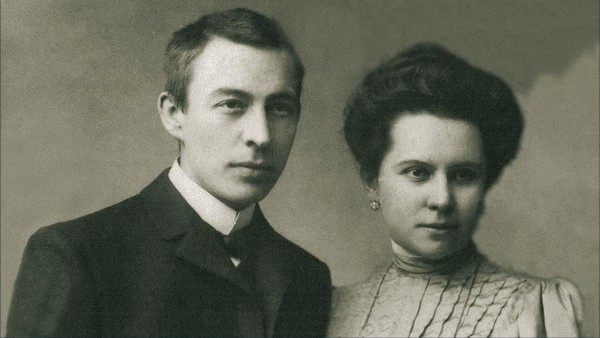
Sergei and Natalya Rachmaninoff
Sergei Rachmaninoff met his future wife, Natalya, while studying at the Moscow Conservatory.
Unfortunately, they were first cousins, and the Russian Orthodox Church disallowed marriage between cousins without securing permission from the tsar. To avoid trouble, they went to an Army barracks to get married in 1902. Read more about Sergei Rachmaninoff and Natalya Satina.
They had two daughters, Irina in 1903 and Tatiana in 1907. They also had two grandchildren.
Their marriage was long and generally happy, even as they were forced out of Russia due to political instability. They settled in the United States just before World War II broke out.
In his sixties, Sergei’s health began deteriorating. He died in Beverly Hills in 1943 of melanoma. Natalya donated her husband’s papers to the U.S. Library of Congress and lived until 1953.
Here’s a poor-quality, but fascinating, home recording of the Rachmaninoffs playing four-hand piano together:
Rachmaninoff plays Polka Italienne with his wife
8. Charles and Harmony Ives
1908-1954 – 46 years
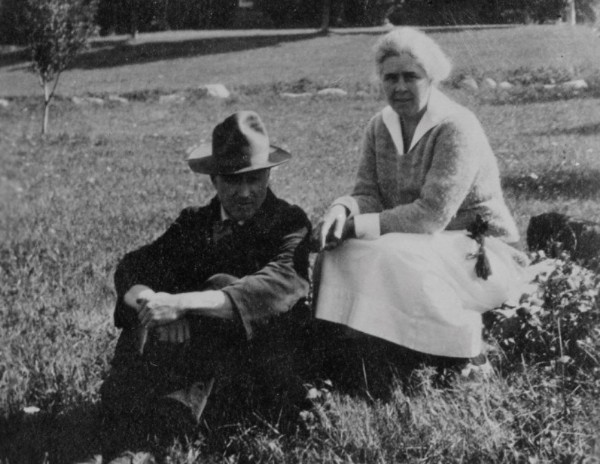
Charles and Harmony Ives
In 1906, when he was 32, Charles Ives began courting a settlement house nurse by the name of Harmony Twichell. He had known her for ten years, but the relationship didn’t turn romantic until they reached their thirties.
The couple was married in June 1908. They shared many spiritual and artistic interests. She encouraged his composing, and many of his most famous works date from this time.
In 1909, Harmony suffered a devastating miscarriage that prevented the couple from conceiving again. Once they knew they could no longer have biological children, they began hosting children at their country home through an organisation called the Fresh Air Fund. In 1917, they adopted a three-year-old child named Edith Osborne Ives through the program. Charles would write several songs for her.
Charles Ives: To Edith
In 1927, Ives finished composing. It was as if some creative well within him had run dry: “nothing sounds right,” he told Harmony with tears in his eyes.
In 1954, he died of a stroke in New York City. Harmony continued promoting her husband’s legacy until she died in 1969.
7. John Cage and Merce Cunningham
1945-1992 – 47 years
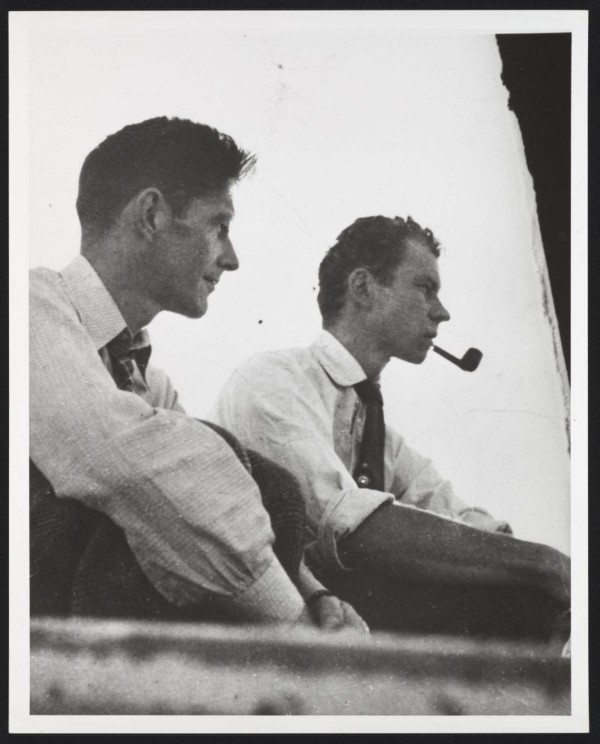
John Cage and Merce Cunningham, 1945
Although queer couples were unable to get legally married in the twentieth century, many had relationships that lasted for decades. These relationships were marriages in spirit, if not in law.
Composer John Cage had one such relationship with choreographer Merce Cunningham. The two became friends and colleagues in the 1940s. After Cage divorced his wife in 1945, he and Cunningham began a personal and professional partnership.
Cunningham helped to facilitate many of Cage’s avant-garde ideas, and Cage was especially inspired by writing for Cunningham’s modern dances. They spent decades working in close proximity.
In the late summer of 1991, John Cage was making tea for himself and Cunningham when he had a stroke. He died the following morning.
Cunningham lived for nearly twenty more years, dying in 2009. His last work, Nearly Ninety, was premiered shortly before his death.
Merce Cunningham: On John Cage
6. Leoš and Zdeňka Janáček
1881-1928 – 47 years
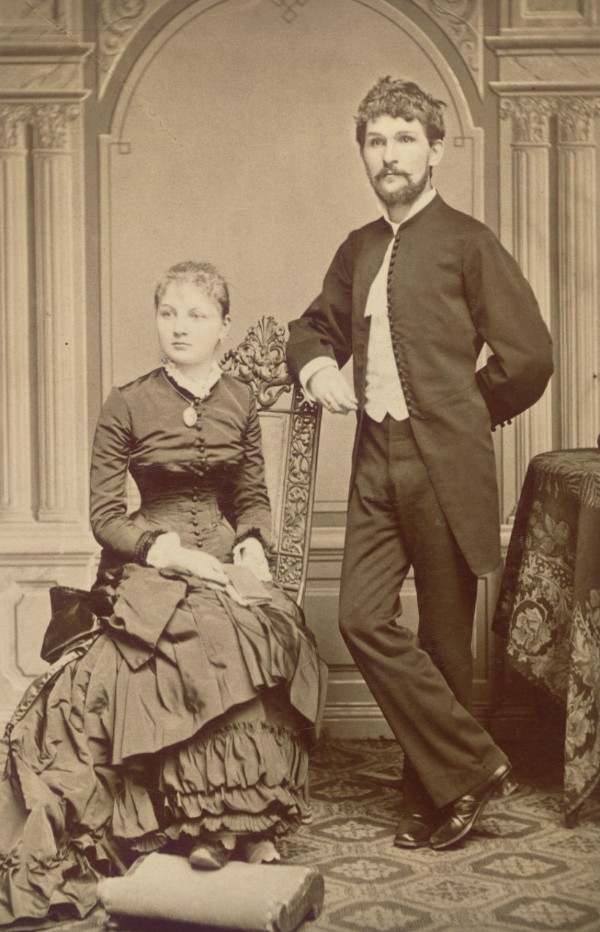
Leoš and Zdeňka Janáček
Leoš Janáček was born in Hukvaldy in the modern-day Czech Republic in 1854. He studied music in Brno, Prague, Leipzig, and Vienna.
In the late 1870s, when he was in his mid-twenties, Janáček started teaching piano to his boss’s daughter, a girl named Zdeňka, who was in her early teens. He proposed when she was just fourteen, and they married the following year.
Zdeňka gave birth to two children, Olga in 1882 and Vladimír in 1888.
Not surprisingly given their age difference, the couple grew apart. When Vladimír died at the age of two of typhoid fever, it was the death knell for their marriage. Things got even worse after Olga died at the age of 21 in 1903.
Zdeňka eventually declared that they would observe an “informal divorce.” They would live in the same house, but not as partners or lovers.
In 1917, his marriage practically over, Janáček embarked on an obsessive friendship with twenty-five-year-old Kamila Stösslová. She ended up inspiring many of his late-in-life masterpieces. Although the presence of Stösslová was deeply hurtful to Zdeňka, she and Leoš never got an official divorce.
Janáček died in 1928, and Zdeňka wrote her memoirs. They remained unpublished for years, but were finally released in 1998. The account gives historians a first-hand account of a marriage that had clearly been doomed from the start.
5. Steve Reich and Beryl Korot
1976-2025 – 49+ years
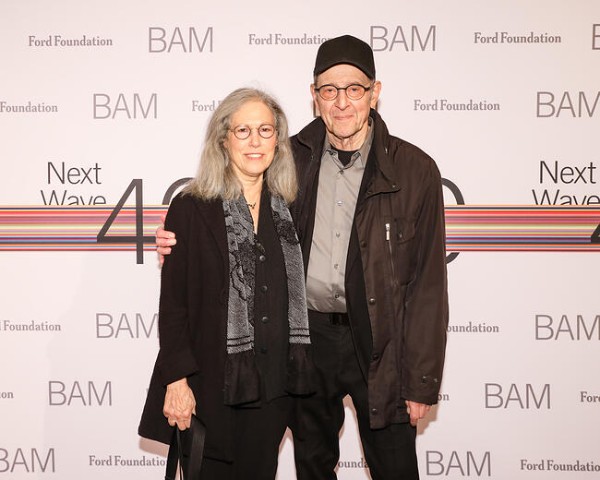
Steve Reich and Beryl Korot
In 1974, composer Steve Reich married artist Beryl Korot. Ever since, the two have influenced each other’s art in major ways.
Thanks to Korot’s influence, Reich became more interested in his Jewish ancestry. After his marriage, he began writing works with overtly Jewish themes and texts.
Reich partnered with Korot when creating his first multimedia work, The Cave, which was inspired by the life of Abraham and featured music by him, with video by Korot.
The two had one child together, a son named Ezra, in 1978.
Both Reich and Korot are still alive as of 2025, so their marriage will continue to climb this list!
4. György and Vera Ligeti
1952-54, 1957-2006 – 2 years, plus 49 years
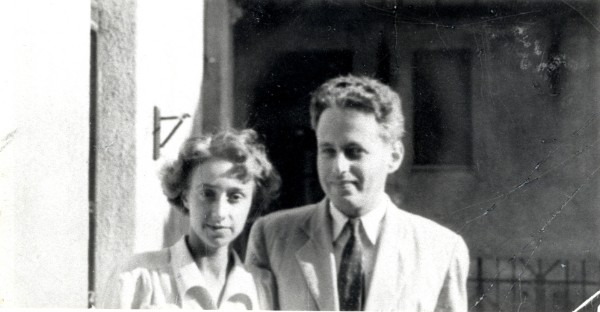
György and Vera Ligeti
György Ligeti was born to a Jewish family in Romania in 1923. His music studies were interrupted in 1944, when, at the age of twenty-one, he was drafted into a forced labour brigade. He lost his brother and father in the Holocaust.
Veronika (later known as Vera) Spitz was born in Budapest in 1930. She and her mother survived the Holocaust, but her father did not.
The two twentysomethings, bonded by the pain of their mutual losses, got married in 1952, a few years after the great traumas of the war and genocide. That marriage lasted for two years before they got divorced.
However, after the Soviets violently crushed the Hungarian Revolution in 1956, they fled together to Vienna, reconnected there, and in 1957, remarried. They had a son, Lukas, in 1965. He has since become a musician himself.
György pursued his music career, ending up a star of the avant-garde, while Vera became a psychoanalyst who specialised in studying refugee children.
3. Ralph and Adeline Vaughan Williams
1897-1951 – 54 years
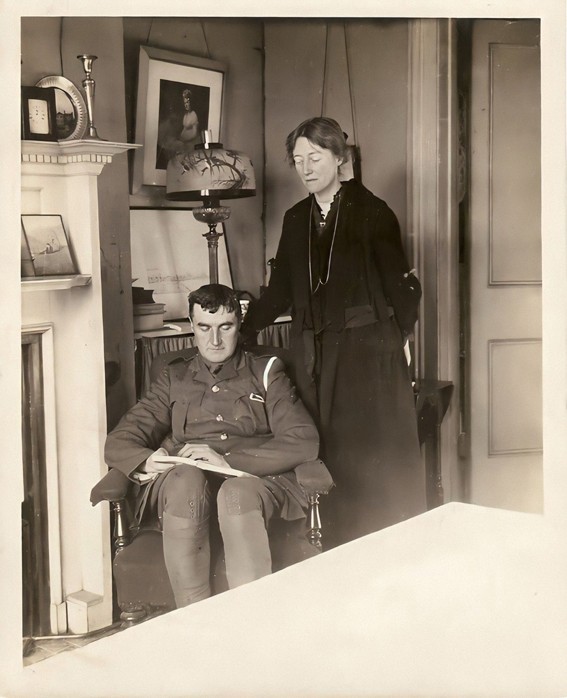
Ralph and Adeline Vaughan Williams
When he attended Cambridge in the 1890s, Ralph Vaughan Williams found himself attracted to a beautiful woman named Adeline Fisher, daughter of an old family friend.
The two fell in love and got engaged in June 1897 and were married that October.
Adeline often found herself embroiled in family drama, so Vaughan Williams decided they needed a change of scenery for their honeymoon. Together they traveled to Berlin, where Vaughan Williams studied for six months with composer Max Bruch.
Unfortunately, as early as 1909, Adeline began suffering from arthritis and chronic pain.
In the late 1930s, Ralph fell in love with another woman, a writer named Ursula Lock Wood, who was nearly forty years his junior. In 1938, she sent Ralph a scenario for a ballet, and the two of them got together to discuss it. The ballet never came to fruition, but a romantic relationship did.
Meanwhile, Adeline became increasingly disabled and immobilised. She either didn’t understand what was happening between her husband and Ursula, or didn’t mind it. The two women stayed friends until Adeline’s death in 1951.
Ralph and Ursula were married in 1953.
2. Richard and Paulina Strauss
1894-1949 – 55 years
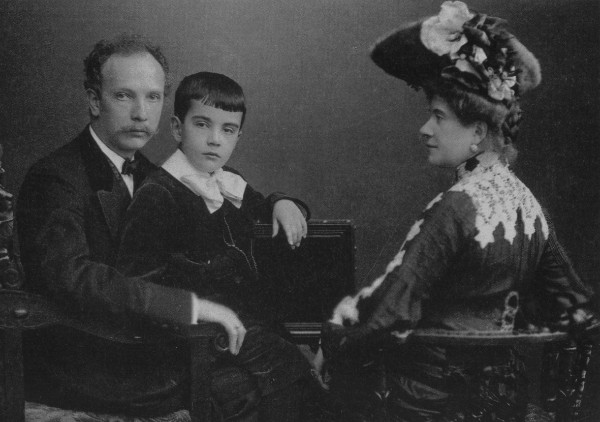
Richard and Paulina Strauss
The strong-willed soprano Pauline de Ahna was born in Ingolstadt, Germany, in 1863. She studied at the Munich Musikschule, where a celebrated horn player named Franz Strauss taught.
Franz had a son named Richard who was an up-and-coming composer and conductor. Soon, Pauline and Richard’s professional paths began to cross, and they fell in love with each other.
In 1894, they both made their debuts at the prestigious Bayreuth Festival. They got married that same year.
They had a son in 1897, and Pauline stepped back from the concert stage to care for him.
The Strausses’ passion for each other was legendary. Richard immortalised it in the tone poem Symphonia Domestica, which traces a day in the life of a young family. It culminates with a steamy nocturnal love scene apparently drawn from life.
Richard Strauss: Symphonia Domestica Op. 53
Over the years, Pauline also served as inspiration for Richard’s famously complex and beloved female operatic roles.
Richard Strauss died in 1949 at the age of eighty-five, and Pauline died ten months later.
Read more about Richard Strauss and Pauline Maria de Ahna.
1. Jean and Aino Sibelius
1892-1957 – 65 years

Jean and Aino Sibelius
Jean Sibelius and Aino Järnefelt met when her brother brought his school friend Jean to the family house in 1889. Jean and Aino fell in love and were married on 10 June 1892.
Over the course of their marriage, they had six children, all daughters.
Between 1903 and 1904, after Sibelius inherited some money from a wealthy uncle, they built a country home for themselves outside of Helsinki. They called it Ainola, or Aino’s Place.
Their marriage endured some rocky times. The death of their two-year-old daughter in 1900 was a particularly devastating blow. Sibelius’s struggle with alcoholism worsened, especially during the early years at Ainola.
Toward the end of his life, Sibelius became creatively paralysed, unable to compose anything on a large scale after the 1920s. He also destroyed many of his own works in the Ainola fireplace.
However, the couple always pulled through the tough times together. Their marriage only came to an end when Jean died in 1957. Aino continued to live at Ainola, visited by their daughters, until she too passed away in 1969. Both are buried on the property.
For more of the best in classical music, sign up for our E-Newsletter

